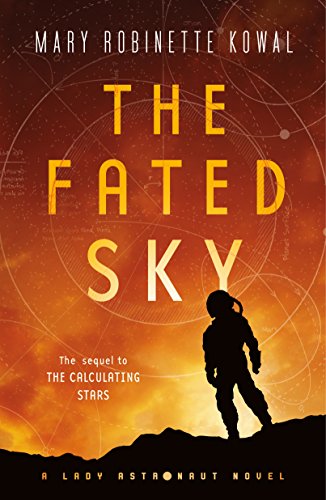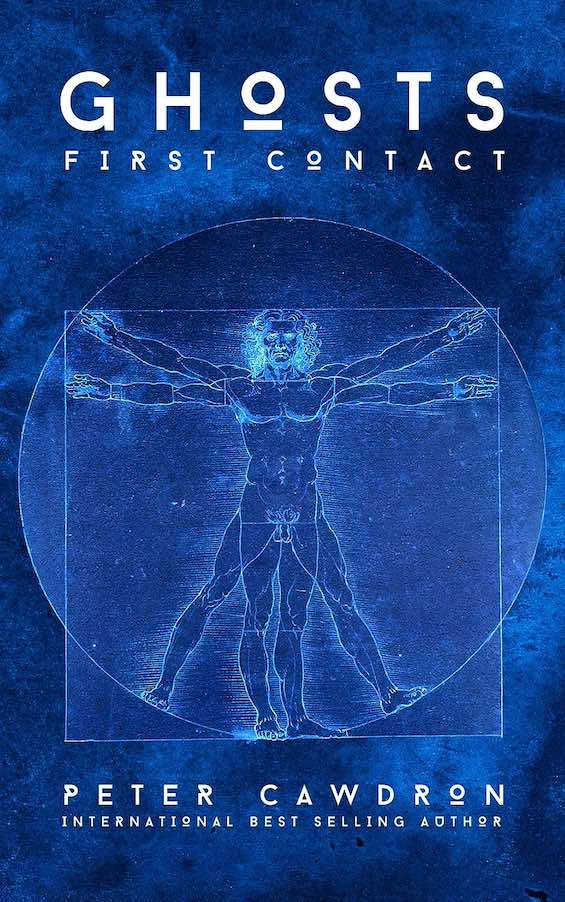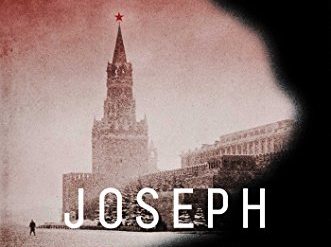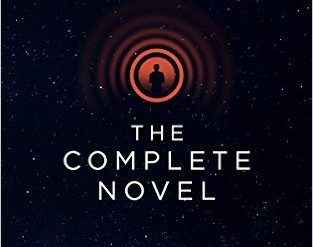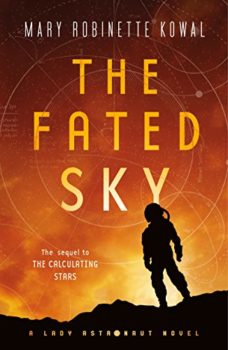
The first book in Mary Robinette Kowal‘s Lady Astronaut series was “engrossing to the point that I had to tear myself away to eat or sleep. The Calculating Stars is a tour de force of historical fiction. It’s also an example of just how good hard science fiction can be.” And now I can say the same about its sequel, The Fated Sky. This amazing novel about the first manned mission to Mars is one of the best works of science fiction that I’ve read in quite awhile.
From the first book in the series
In The Calculating Stars, a meteorite crashes into the Atlantic off the coast near Washington, DC, obliterating much of the East Coast and sending hundreds of thousands of refugees streaming westward. At the National Advisory Committee for Aeronautics (NACA), a young woman named Elma York is working as a “computer.” She was a child prodigy and holds a PhD in physics and math from Stanford. So when her husband, Nathaniel York, NACA’s chief engineer, asks her to calculate the impact of the meteorite, she is able to do the job as few others could.
The Fated Sky (Lady Astronaut #2) by Mary Robinette Kowal (2018) 384 pages ★★★★★
That meteorite impact was an extinction event
Elma quickly finds proof that the impact was an extinction event, and she and Nathaniel set out to convince the military and the White House that humanity’s future can only be secured by a massive investment in establishing a colony on Mars. After desperate effort, they succeed, and the two take on critical roles in the preliminary mission to the Moon. Later, gaining widespread popularity through a television appearance, Elma eventually joins the team of astronauts to establish the Moon base and forces NACA to accept other women on the team. But it is she who becomes known as the Lady Astronaut.
Now the Lady Astronaut will join the first manned mission to Mars
The Fated Sky takes up the Lady Astronaut’s story three years after she has helped build the Moon base. (“I’d made the trip between Earth and the moon about a dozen times.”) She isn’t slated to join the crew of the first manned mission to Mars. But growing opposition to NACA and the enormous sums diverted to fund it cause the agency’s director to reconsider. A movement called Earth First has gathered widespread support and is turning to violence. NACA’s director needs to tap Elma’s enormous popularity with the public, so he assigns her to the crew after all. The novel explores the personal dimensions of that decision—for her and Nathaniel, and for her relationships with the others in the crew—as the mission unfolds.
Four reasons why this novel is remarkable
So, why is this story so remarkable?
Alternate history
The two novels are set not in the 21st century but in the 1950s and 60s, based on two entirely credible premises: that Thomas Dewey defeats Harry Truman in the 1948 election and quickly turns to building the country’s capacity to explore space . . . and that Nazi scientist Wernher von Braun has the means to build rockets capable of reaching the Moon and Mars. The first of these assumptions is not far from the truth, as that election went down to the wire. And the second is demonstrably true. Von Braun himself publicly spoke and wrote widely about exploring the solar system. (For details on these points, read Kowal’s appendix entitled “About the History” at the conclusion of The Fated Sky.)
Hard science fiction
The science and engineering information in these novels is based on intensive research the author conducted at NASA. She consulted with test pilots, astronauts, NASA administrators, and experts in space medicine. I’m not in a position to assess the accuracy of what she wrote. But it’s clear that the manuscript was closely reviewed by many who are. This is, indeed, hard science fiction. (Check the Acknowledgments for details.)
Realistic assumptions about human and machine failures
On the missions to the Moon and Mars, lots of things go wrong. Much of the suspense in these novels is based on the realistic assumption that mechanical and human failures will be common. So, there’s nothing that seems contrived about the plot.
Penetrating psychological insight
Above all, Kowal has done a brilliant job depicting the interactions among the fourteen men and women who crewed the first two ships on the Mars mission. Their prejudices, conflicts, misunderstandings, and inevitable pairings are all entirely credible. Although most hard science fiction is about machinery and unfamiliar circumstances, that’s not the case here. The characters who people these two novels are undeniably human.
I can only hope that there will be a third and subsequent entries in the Lady Astronaut series.
For related reading
I reviewed the first Lady Astronaut novel, The Calculating Stars, at This novel shows just how good hard science fiction can be. The book won both the 2019 Hugo and Nebula Awards for Best Novel. Later, I reviewed the third book: The Relentless Moon, at The third Lady Astronaut novel doesn’t live up to the promise of the first two.
This is one of the 10 best alternate history novels and Good books about space travel. And I’ve included Mary Robinette Kowal on my list of Ten new science fiction authors worth reading now.
For more good reading, check out:
- These novels won both Hugo and Nebula Awards
- The ultimate guide to the all-time best science fiction novels
- 10 top science fiction novels
- The top 10 dystopian novels
- Ten new science fiction authors worth reading now
And you can always find my most popular reviews, and the most recent ones, on the Home Page.

